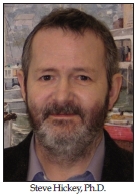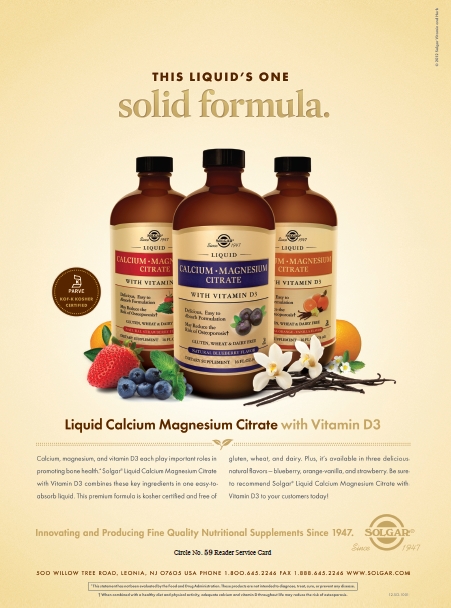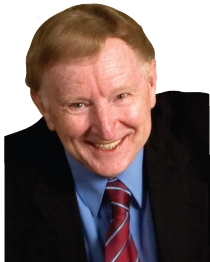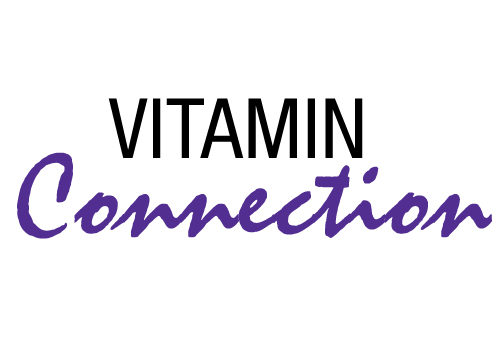The study of drugs involves testing a single compound to see what it does. Drugs act alone. A nutrient, on the other hand, closely interacts with other nutrients and is dependent on having adequate amounts of all of its supporting nutrients. Studying a single nutrient in isolation of all other nutrients is a failed concept that may be suitable to drugs, but is definitely not suitable for nutrients. Yet, this is exactly what is done in clinical studies, using the randomized, placebo-controlled, cross-over, large prospective studies that are called the “gold standard” of evidence-based medicine (EBM). Physicians look down their noses at any claim that a nutrient is beneficial unless it was studied by a gold-standard clinical trial. They say that anything less doesn’t prove that a nutrient helps and that they, the physicians, accept only EBM. A new book by  Steve Hickey, Ph.D., and Hilary Roberts, Ph.D., (Tarnished Gold: The Sickness of Evidence-Based Medicine, 2011, CreateSpace) points out that not only is the EBM concept flawed, but it is also a tarnished gold-standard that should be abandoned.
Steve Hickey, Ph.D., and Hilary Roberts, Ph.D., (Tarnished Gold: The Sickness of Evidence-Based Medicine, 2011, CreateSpace) points out that not only is the EBM concept flawed, but it is also a tarnished gold-standard that should be abandoned.
Dr. Hickey has chatted with us before about the science of vitamin C and its intake level for optimal health. Dr. Hickey, after studying mathematics and science at the Open University and pharmacology at Manchester Metropolitan University, earned his Ph.D. in medical biophysics from the University of Manchester. In addition to his books on nutrition, Dr. Hickey has published numerous research papers in biophysics, computing, nutrition and biology.
Passwater: Many of our readers may remember our earlier chat with you in 2007 about the science of vitamin C. However, for those who may be new readers, would you please tell us what drew your interests to medical biophysics and, by the way, just what is medical biophysics?
Hickey: Most people are familiar with biochemistry, which is the chemistry of life. Biophysics is the physics of living things. Medical biophysics has a particular slant toward medicine and health. I suppose an ultimate goal of scientific medicine and biology is to live up to the achievements of physics.
While studying pharmacology, I became interested in the physical aspects of how drugs were transported around the body and how they interacted with receptors. I switched disciplines to biophysics for my Ph.D., which was awarded for theoretical modelling of intervertebral disks in the spine.
Passwater: Your new book is called Tarnished Gold: The Sickness of Evidence-Based Medicine. Why did you call it Tarnished Gold?
Hickey: For a long time, my co-author and I had been trying to explain the benefits of nutritional supplements to a somewhat resistant medical community. However, we were faced by silly demands for “scientific proof” from “gold-standard randomized clinical trials.” We were forced, repeatedly, to explain that there is no such thing as “proof” in science and that randomized clinical trials are not a gold-standard. Science relies on replication and refutation: a rule of thumb for this is, “Trust, but Verify.”
We had no trust in EBM, as it is almost untestable. EBM is not science; indeed, it isn’t even rational. Unfortunately, it has the superficial appearance of being a good idea and thus has infected the way doctors think. EBM distorts treatments and harms patients. It is like a cancer, contaminating medicine with irrationality. So, the title, Tarnished Gold, expresses the idea that the medical gold standards have been tainted by a sickness called EBM.
Passwater: How did you come to write this book?
Hickey: At the time we wrote it, EBM was becoming increasingly popular and was thought to provide a scientific approach to medicine. This could be seen as a form of physics envy. “Skeptics” take great delight in attacking soft targets, such as homeopathy or reflexology, as unscientific; they also generally support the status quo, including EBM. Despite this, EBM has no external justification. Its supporters claim it is the “best” approach, but there is no external validation for this. We agree with the idea that it is an excellent methodology for government control and for large medical organizations, but it is inappropriate for patients.
We wrote the book to explain that the statistics used in EBM are decades out of date. This is important because the claims for EBM’s benefits are based on statistics. It is easy to show that EBM breaks the rules of several disciplines. These include cybernetics, information theory, game theory and chaos theory—hardly topics noted for lacking scientific rigor!
Our aim was to describe the problems in a simple way, so it would be obvious to a reasonably intelligent reader that EBM was pseudoscience. We wanted to challenge the smugness of corporate medicine. The book destroys EBM’s foundations, and even incorporates a little bit of humor.
Passwater: What is evidence-based medicine (EBM)?
Hickey: EBM is medicine based on the statistics of large groups. Essentially, the “evidence” in EBM is composed of aggregate statistics. Notice that it is called evidence-based and not information-based, data-based or science-based. The reason behind this name gives the game away.
Evidence is what lawyers use to support their arguments. This is no coincidence, since it turns out that the key rules for EBM came from the legal system. Judges stipulated the rules for legal evidence, during a case in which a pharmaceutical company was being sued for drug side-effects. Corporate medicine seized on this idea because it helped them create a bigger monopoly and avoid lawsuits. Consequently, the evidence in EBM is not scientific data but legal evidence.
Disturbingly, this evidence protects the doctor, pharmaceutical company or government from legal challenges by patients. We suggest that the term evidence-based in EBM is replaced with legal-based (LBM, or legalistic medicine) to remind patients that it does not serve their interests.
Passwater: Why do so many believe that EBM must be a good thing?
Hickey: I think a rational patient would prefer to be given science-based medicine. Ask yourself, do you want to be given a treatment determined by lawyers and accountants, or one based on science?
 Passwater: What is wrong with EBM?
Passwater: What is wrong with EBM?
Hickey: The key problem with EBM is it uses old-fashioned group statistics. Each person is an individual and is poorly served by being treated as the average of a group. EBM is based on a statistical fallacy; you should not apply group statistics to individuals. EBM does not even try to avoid this error.
Passwater: Why does this matter?
Hickey: A doctor treating a patient needs to make decisions. Typically, a doctor’s diagnosis will classify the patient as having a disease. Next, a treatment will be predicted to be effective, aimed at giving the greatest benefit for the least harm. These two issues, classification and prediction, are not well served by EBM. In other fields, EBM’s old-fashioned statistics were rejected long ago for this sort of application.
The results of clinical trials and meta-analyses should mostly be ignored by a patient trying to choose a suitable treatment. EBM does provide some general background information. Nevertheless, a rational patient and doctor would make their own decision for the situation at hand.
Passwater: If there are all these problems, why has EBM become so prominent?
Hickey: EBM provides legal protection for the medical system. It provides a means of corporate control of doctors and treatments. It should come as no surprise that the ideas for the evidence base and proof originated with the legal fight against the tobacco companies. The companies obviously had to assert strongly that EBM is based on science in order to make their point. The judges, however, were not trained in science but in law.
EBM is not scientific, although the authorities that are protected by EBM claim that it is. Part of the problem is that the nature of science is often misunderstood. As mentioned earlier, science needs us to trust but verify the results of others. We can afford to trust a result if we have the ability to repeat the experiment and check it out. Small, low-cost experiments are replicable in this way. In EBM, by contrast, the aim seems to be to make clinical trials so large and expensive that only corporate medicine can do them. Do you have $50,000,000 and five years to spare? There should be no trust in such trials, as we cannot verify they are correct.
Passwater: What are the consequences of EBM for patients?
Hickey: Have you noticed how corporate medicine avoids the word, “cure”? Clinical trials have increased in size by about 100 times in the last few decades. In the 1970s, there were about 30 patients and controls per experiment. Nowadays, many have 3,000+ patients! The cost per patient of these large trials is tens of thousands of dollars, for each subject! Besides not being easily verified, there is another reason for using large trials. By a statistical sleight of hand, they can be used to “prove” that ineffective drugs work.
In a clinical trial, it is possible to produce statistically significant results from a really poor drug. An easy way to do this is to increase the size of the trial, which may reduce the size of effect associated with a particular level of significance. More importantly, the chance of a treatment actually benefiting a patient declines rapidly with study size. Very highly significant results can be obtained for a drug that is of no benefit to a patient being treated. In this view, the term, “significant” can be thought of as a meaning for a drug that is useless and does not help patients, but can legally make a massive profit.
Passwater: Is there any reason to keep using EBM? Does it have any advantages?
Hickey: EBM helps corporate medicine, governments and large pharmaceutical companies. It provides hospitals, doctors and other health care workers with legal protection. So in that sense, EBM is wonderful. Conversely, EBM means a patient pays over the odds for medicines that do not work, and may have unwanted side effects. From the patient’s perspective, if EBM were abolished, the standard of health care would dramatically improve.
Passwater: If EBM is so flawed, what should we use instead?
Hickey: The answer to this is remarkably easy to express and somewhat obvious when explained. A patient’s treatment should make sense, based on our available knowledge. We propose the idea of a rational patient. This suggests using those treatments that an intelligent patient would choose, when given all the data. The decision-making unit becomes the doctor–patient partnership. The doctor provides the necessary information and guidance to help the patient make a rational choice.
Interestingly, EBM is of very limited use to a rational patient and doctor. The information they need is well established and has been described by studies in game theory, cybernetics and the decision sciences. We need to go back to real science and give the doctors back the power to help their patients.
Passwater: How important are anecdotal reports?
Hickey: Case studies are a unique source of information that is typically unobtainable from clinical trials and meta-analyses. Anecdotal reports provide direct information about individuals. A large-scale clinical trial is nothing more than a poorly controlled series of case studies. Contrary to popular belief, it is possible to analyze a series of individual patients with at least as much rigor as in a clinical trial. Most clinical trials fail by design—they are too large, poorly controlled and badly analyzed.
If medicine is going to become truly scientific, it will begin with studying individual patients. One approach is to redesign clinical trials in terms of a sequence of individuals. Individual doctors can then evaluate treatments for themselves at low cost.
Passwater: How does EBM feed the pharmaceutical industry?
Hickey: The introduction of placebo-controlled trials means that drugs are not tested competitively. Patients expect new drugs to be better than the best existing treatments. In a clinical trial, however, a pharmaceutical company only needs its new drug to beat a placebo. Internationally, these placebo-controlled trials are considered unethical, but the U.S. Food and Drug Administration and the drug companies need them to sell useless, uncompetitive drugs.
The result of large-scale EBM trials is that drug companies have a monopoly. The cost of testing and licensing new drugs is prohibitive and provides massive companies with a mechanism to keep competition out of the market. It also means that drug companies do not need effective drugs, merely new substances that just outperform a placebo (i.e., they are only slightly better than nothing at all).
Passwater: One example that comes readily to mind is drugs have been approved that are derivatives of vitamin D. The vitamin D derivatives were compared to placebo and then approved and highly recommended because physicians were told that the evidence showed they were effective. However, the vitamin D derivatives are not as good as vitamin D itself, but the patent-holding researchers purposely did not compare the vitamin D derivative drug to vitamin D, but only compared it to an ineffective placebo. Millions of dollars have been wasted on a poorer drug than the nutrient vitamin D and, as a result, people not only were wasting their money, but their health was also hampered.
Is EBM a fad?
Hickey: EBM is driving medicine into a backwater. Some doctors follow the fashion misguidedly because they believe they are being scientific. This suggests that medical education lacks basic scientific understanding.
Passwater: From where did EBM come and, bathroom humor excepted, where is it going?
Hickey: As discussed earlier, EBM came from the courts, particularly the need to challenge the tobacco industry. Big tobacco wanted a means to obfuscate and confuse; group statistics and epidemiology were their weapons of choice. The battle became one of statistics. Smokers and the courts were faced with the promotion of doubt, based on population statistics. Eventually, this led to the U.S. Supreme Court specifying that only statistical medicine was acceptable as evidence. Other things, including basic sciences like chemistry and physiology, were deemed inapplicable. This ruling was morphed into the EBM evidence hierarchy. The history of EBM is bizarre: it suggests that epidemiology, or social science and its associated statistics, should be considered more rigorous than physics.
From the patient’s point of view, it would be ideal if EBM were subject to a complete overhaul. We need to reconsider medicine in terms of what rational patients would choose for their treatments. This is more rigorous than EBM and ensures that everyone gets the most appropriate treatment. What possible objection could there be? To suggest a patient should have an irrational treatment choice is itself irrational, not to mention unethical.
Passwater: Vaccination and fluoridation have not been double-blind placebo tested. Is this a disconnect with EBM?
Hickey: There are some major issues with both vaccination and fluoridation. Both lack a scientific foundation and have ethical issues. Strangely, we use an example of Pasteur’s sheep trial on anthrax vaccine to illustrate how a good experiment is both simple and convincing. The problem with vaccination is it is misused, misunderstood and has become harmful. Once again, the background science is at fault; we may explain these issues in another book in the near future.
Passwater: It is unethical to withhold promising treatment from a sick patient. Why is there such a clamor for EBM IV-C trials on terminally ill cancer
patients?
Hickey: There are two issues with vitamin C here. First, intravenous (IV) vitamin C was promoted by the National Institutes of Health and others as potentially being effective against cancer, while oral intakes would not work. The reasoning was fallacious, but helped generate the idea that IV vitamin C was useful for cancer patients, while supplements were not. The NIH then started on some clinical trials that appeared to show that IV vitamin C had little effect. We predicted that, given alone, IV vitamin C would be ineffective for treating cancer, but the NIH and related studies were particularly badly designed.
Intravenous ascorbate (vitamin C) is commonly considered more macho than supplements. This is a follow-on from the chemotherapy zap-it-and-kill-it mentality. In the major cancers in adults, chemotherapy does not work. It shrinks the cancer by killing the weaker susceptible cells. The result is that strong, aggressive, cancer cells remain, grow rapidly and are resistant to treatment. Patients do not gain any increase in life expectancy, but suffer the well-known and rather horrible side effects.
Another, more appropriate, approach is based on vitamin C and dietary change. The idea is to control the cancer and extend the patient’s healthy life. We covered this in two books: Cancer: Nutrition and Survival and The Cancer Breakthrough. It is not necessary to hit the tumor as hard as possible. Just increasing the death rate of cancer cells slightly, so more cells die than are created, is enough to eradicate cancer. Cancer needs an intelligent approach to treatment.
Passwater: Abram Hoffer was an early collaborator on the project. What did Hoffer think of EBM?
Hickey: Hoffer was an early pioneer of EBM, in that decades ago he did some of the first randomized clinical trials. However, Hoffer soon realized the problems. We had some interesting discussions. Hoffer thought EBM was nuts.
Passwater: If it takes a very large sample to show very small trends, might a small sample most assuredly fail to show small trends?
Hickey: Those small trends really mean that the chance of the result affecting an individual is tiny. A rational patient would not consider such a minute risk to be important, as it would be swamped by more critical issues. It is rational to take care crossing a road, but most people would not wear special electrically conductive clothing on the off-chance that they might get struck by lightning.
Small trends are important to governments and large commercial organizations. They might, for example, tell the authorities that they will need to increase the city’s cardiac facilities and hospital beds, if the trend continues. So, the findings do have some relevance, though they are not of great concern for a rational patient or doctor. Patients may take the view that the massive cost of these EBM studies to show tiny trends could be more profitably spent on finding more effective treatments.
Passwater: Might we then miss something good, that only large samples can show?
Hickey: A large-scale trial is sensitive, but this is probably not useful in finding therapeutic benefits. A small trial finds relatively large effects. When a patient goes to be treated, they expect the drug to have a reasonable chance of being effective. A patient who was told that the treatment had less than a 1-in-20 chance of working would be disappointed, or perhaps both desperate and disappointed.
You only need a small study to find effective treatments. Suppose a headache medication has a 1-in-100 chance of providing 20% relief. Such a treatment is of little, if any, use to a rational patient. Ironically, you would need a very large study to show such a small and irrelevant effect as this.
Nonetheless, large studies have some use in finding fairly common side effects of new drugs.
Passwater: If large studies can sometimes find a side effect, might not small studies miss a harmful effect that we need to know about?
Hickey: Case studies are more effective than clinical trials for picking up side-effects. Side-effects found in large clinical trials could equally be found by monitoring a series of patients that have taken the drug. Ultimately, large trials have no redeeming features for rational patients.
Passwater: Some physicians define “Pharmageddon” as “the prospect of a world in which medicines and doctors produce more ill-health than health, and when medical progress does more harm than good.” Is Pharmageddon upon us?
Hickey: Yes. Pharmageddon is here and it is driven by EBM. So-called evidence-based medicine promotes ineffective and harmful treatments, which displace earlier treatments that work.
Passwater: Thanks for chatting with us about your new book. It is a must-read for all those interested in good health. Where can readers get a copy?
Hickey: Our book Tarnished Gold: The Sickness of Evidence-Based Medicine (by myself, Dr. Steve Hickey, and Dr. Hilary Roberts) is available on Amazon.com. We hope it will provide support for all those who think that medicine should be controlled by patients and doctors, rather than by corporate interests. WF
Dr. Richard Passwater is the author of more than 45 books and 500 articles on nutrition. Dr. Passwater has been WholeFoods Magazine’s science editor and author of this column since 1984. More information is available on his Web site, www.drpasswater.com.
Published in WholeFoods Magazine, March 2012










